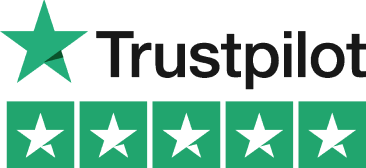Let’s Break This Down Together…
Got a salary, a side hustle, and maybe some rental or investment income on the side?
When tax season hits, figuring out how to declare all these income streams to HMRC can feel like juggling flaming torches, stressful and risky if you drop one.
The good news? Once you know which forms to use, what allowances apply, and how to keep your records straight, the process becomes much easier.
This guide walks you through how to report multiple income sources on your Self Assessment, avoid costly mistakes, and make the most of the tax breaks available to you.
Nowadays, many of us earn money from different places. Maybe you've got a main job plus a side hustle, rent out a property, or have some investments paying dividends.
When tax season rolls around, you need to declare all these income streams to HMRC. Juggling multiple income sources can feel overwhelming at tax time.
Pie tax's multiple income dashboard helps you track everything in one place. Or if you're just here to get to grips with it all, let's break it down!

Introduction to Income Tax
Income tax is at the heart of the UK’s tax system, affecting anyone with multiple income streams.
Whether you earn money from employment, self-employment, rental income, or other sources, understanding how income tax works is essential for both individuals and businesses.
The UK government taxes your total taxable income each tax year, which includes all your earnings from employment income, self employment income, rental income, and more.
Your tax liability is calculated based on your total income, minus any allowances and reliefs you’re entitled to.
Each income stream may be taxed differently, so it’s important to know which types of income are taxable and how they are reported. For example, business profits, property income, and certain benefits all count towards your taxable income.
Ensuring compliance with income tax rules means accurately reporting all your income streams and understanding how each one affects your overall tax position. By staying informed and organised, you can manage your tax obligations efficiently and avoid unexpected tax bills.
What Counts as Multiple Income Streams?
Having multiple income streams simply means you receive money from different sources. HMRC requires you to declare all your incomes, including those from employment, self-employment, and investments. This could include your salary from employment plus earnings from freelance work.
It might also cover rental income from a property you let out. Dividend income from shares in companies you’ve invested in count too.
Don’t forget interest from savings accounts or investments. Pension payments alongside other earnings are also included.
If you are employed, your employer deducts Income Tax and National Insurance through the PAYE system. However, you must still report this income on your tax return if you have other income sources.
If you are self employed, you must declare your self employed earnings separately.
Foreign income that you might need to pay UK tax on should be declared. Each type follows different tax rules, which is why HMRC needs you to declare them separately. Other income, such as bonuses or one-off payments, should also be declared.
How to Declare Multiple Income Streams on Self Assessment UK Tax
When you have various income sources, you’ll need to complete the main Self Assessment form. Managing multiple streams of income requires careful coordination to ensure each is reported correctly. You’ll also need additional sections (called supplementary pages) for each type of income.
For employment income, you’ll fill in the SA102 form using information from your P60 or P45. Self employed earnings require the SA103 form, where you’ll report your business income and expenses.
If you receive rental income, you’ll complete the SA105 form with details about your property. For investment income like dividends and interest, you’ll use specific sections of the main return.
Foreign income needs to be declared on the SA106 form. Remember that each income type might have its own tax-free allowances and rates. Your total earnings from all sources must be included in your Self Assessment.
Last year, I had to report both freelance writing income and rental income from a small flat. The different supplementary pages initially seemed daunting, but breaking it down by income type made it manageable.
Make sure any tax due is paid by the January deadline to avoid penalties.

When to Register for Self Assessment
If you’re only earning from employment where tax is deducted through PAYE, you typically don’t need to file a Self Assessment. Employment income is also subject to National Insurance contributions, which are usually deducted by your employer through PAYE.
However, you must register if your self-employment income exceeds certain thresholds, such as £1,000 in a tax year.
You’ll also need to register if your property income exceeds certain thresholds, specifically £1,000 annually.
The same applies if you earn more than £150,000 from any sources. These are tax free allowance thresholds for different income types, exceeding them means you must declare the income and may owe tax.
Other triggers include needing to pay the High Income Child Benefit Charge. Having untaxed income over £2,500 also requires registration.
The deadline for registering is 5 October following the end of the tax year in which you started earning the additional income. Missing this deadline can result in penalties.
Reporting Foreign Income
If you have multiple income streams that include foreign income, it’s vital to understand your reporting obligations for UK tax purposes. As a UK resident, you are required to declare your worldwide income on your self assessment tax return.
This means any earnings from overseas employment, rental income from foreign property, or dividends and interest from international investments must be included in your assessment tax return.
Foreign income is subject to UK taxation, but double taxation agreements between the UK and other countries may help reduce your tax liability.
These agreements are designed to ensure you don’t pay tax twice on the same income. When completing your self assessment, you’ll need to provide details of your foreign income and claim any relief available under relevant double taxation agreements.
Accurate reporting of foreign income is crucial to avoid penalties and ensure you pay the correct amount of tax. Make sure to keep detailed records of all your foreign earnings, including property income, dividends, and investments, so you can complete your tax return with confidence and stay compliant with HMRC requirements.

Key Sections of the Tax Return Form
The SA100 tax return form is your main tool for reporting all your income types and claiming tax reliefs. If you have multiple income streams, it’s important to know which sections of the form to complete.
The form includes dedicated sections for employment income, self employment income, and rental income, allowing you to report each income stream separately.
You’ll also find areas to declare UK pensions, annuities, and income from registered pension schemes.
If you make charitable donations or are eligible for specific allowances, these can be entered in the relevant sections to help reduce your tax bill. The form also covers high-income child benefit charges and any repayments due.
Completing each section accurately ensures you claim all the tax reliefs and allowances you’re entitled to, and that your tax return reflects your true income position. Take your time to review each part of the form, and use your records to support the figures you enter for each income type.
Making the Most of Tax Allowances
This section serves as a comprehensive guide to managing multiple income streams and tax allowances.
With multiple income streams, smart planning can help reduce your tax bill legally. Everyone gets a Personal Allowance (currently £12,570), which is tax-free income from any source.
The Trading Allowance gives you £1,000 of tax-free income from self-employment. Similarly, the Property Allowance provides £1,000 tax-free from property income.
The Dividend Allowance lets you receive £1,000 in dividends without paying tax. The Personal Savings Allowance means basic rate taxpayers can earn £1,000 interest tax-free (£500 for higher rate).
In addition to these allowances, claiming allowable expenses, such as mortgage interest for rental properties, can further reduce your taxable income. Keeping accurate records of allowable expenses is essential for maximising deductions and ensuring HMRC compliance.
By understanding these allowances, you can organise your affairs to minimise tax while staying compliant. It’s worth reviewing these annually as they can change with each Budget.
Record-Keeping for Different Income Types
Keeping accurate records is essential when you have multiple income streams, as it helps you manage your finances, stay compliant with HMRC requirements, and accurately calculate and report your taxes. For self-employment, keep all invoices, receipts, bank statements and details of business expenses.
For rental property, save tenancy agreements, rent receipts and mortgage statements. Don’t forget to keep maintenance bills and other property-related expenses.
For investments, keep dividend vouchers, interest statements and purchase/sale documents. These will help verify the figures on your tax return if HMRC has questions.
Keep records for at least five years after the 31 January submission deadline for the relevant tax year. Digital record-keeping can make this easier to manage, and digital accounting solutions can help ensure you are keeping accurate records and staying compliant with HMRC requirements.
Maintaining accurate records is also essential for claiming allowable expenses and simplifying the tax filing process.

Common Mistakes to Avoid
Managing taxes across multiple income streams requires careful attention to detail.
When declaring multiple income streams, watch out for forgetting to register a new income source with HMRC within the deadline. Many people also miss out on allowances they’re entitled to claim.
Mixing up business and personal expenses is another common error. Not keeping adequate records to support your tax return can cause problems later.
Filing late incurs automatic penalties even if you don’t owe any tax. The minimum £100 fine increases the longer you delay. Missing the self assessment return or assessment return deadline can also result in additional penalties.
Some taxpayers forget to include income because tax was already deducted at source, like bank interest. HMRC still needs to know about this income, even if no further tax is due. Income from assets, such as capital gains from selling property or investments, must also be declared.
Effectively managing taxes means keeping organised records, understanding the tax implications for different types of income, and seeking professional advice if needed.
Final Thoughts
Managing multiple income streams can make your tax affairs more complex. With good organisation and understanding of the rules, you can stay compliant and efficient.
Start keeping records from day one for any new income source. Consider using digital tools to track everything throughout the year rather than scrambling at deadline time.
Remember that declaring all your income correctly isn't just about avoiding penalties. It's also about claiming all the allowances and reliefs you're entitled to.
Pie tax: Simplifying Multiple Income Streams Tax
Having various income sources shouldn’t mean tax headaches. The UK’s first personal tax app, Pie tax, gives you separate sections for each income type, keeping everything organised in one place.
Our app shows your tax position in real-time as you add information. This helps you understand how different income streams affect your overall tax bill.
The app reminds you of important deadlines for each income type and what records you need to keep. This makes compliance straightforward even with complex income situations.
Please note that using Pie.tax and other digital tax solutions requires a reliable internet connection, as most submissions and updates are performed online.
Take a look at Pie tax if you’d like to see how we can make managing multiple income streams simpler at tax time.











